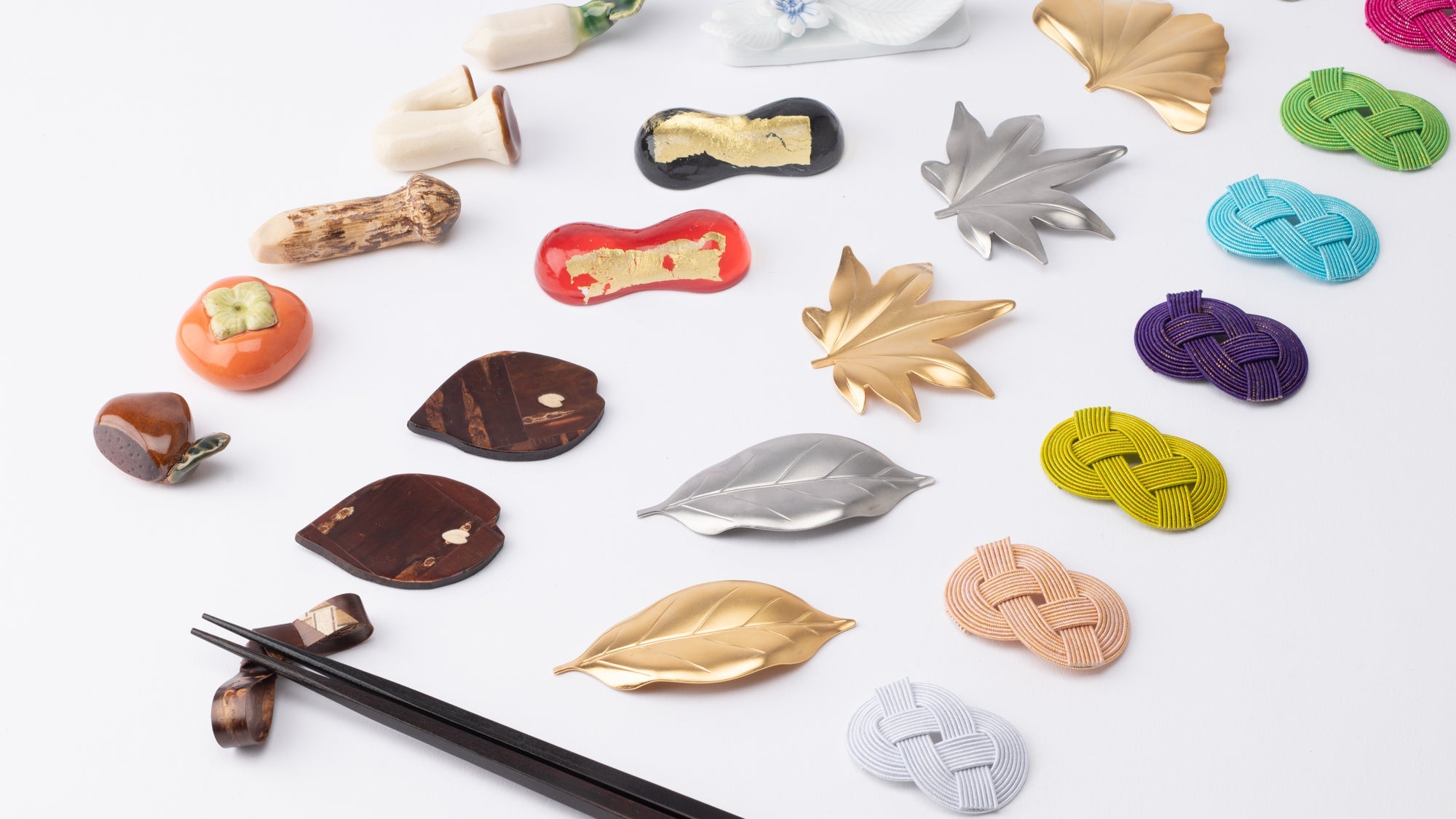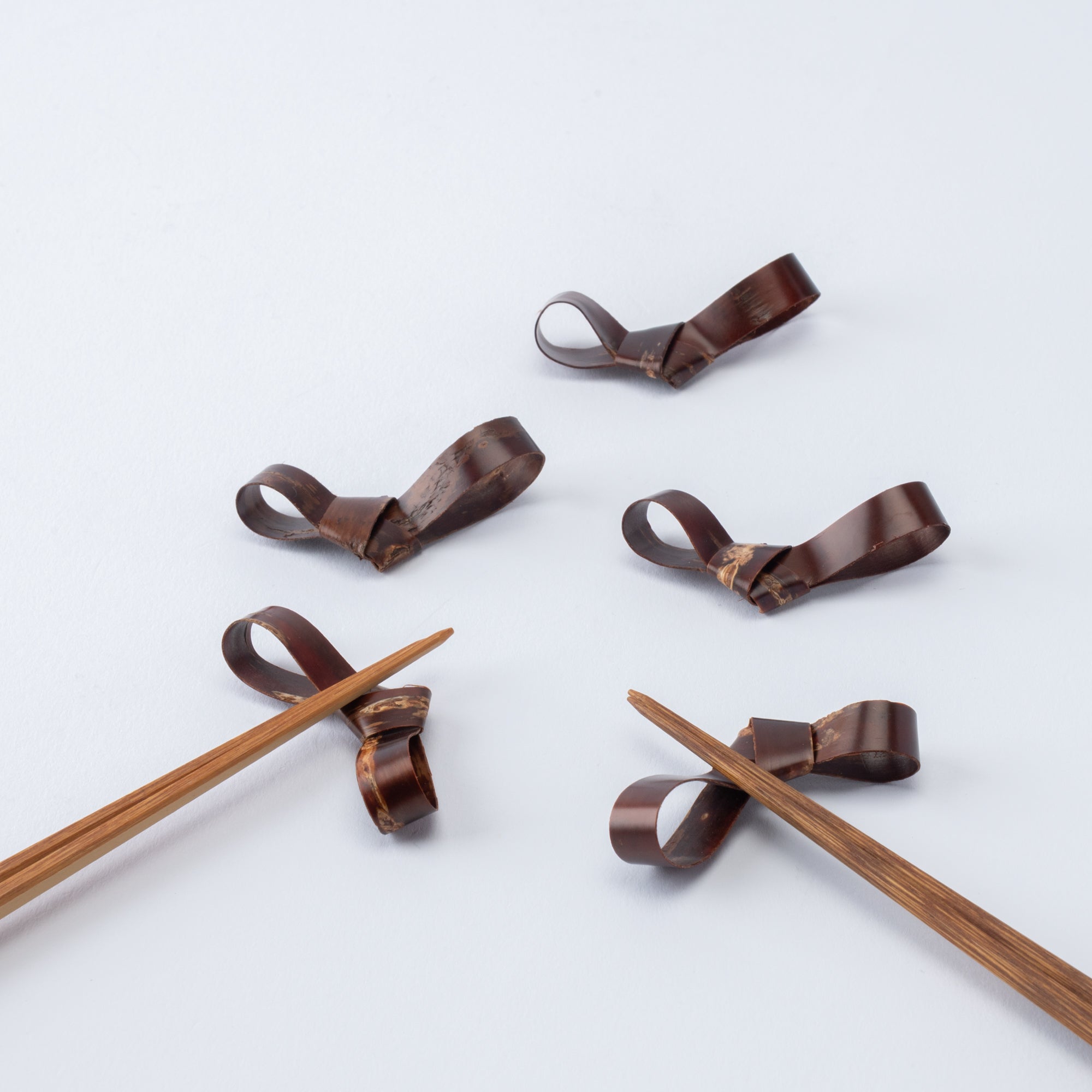
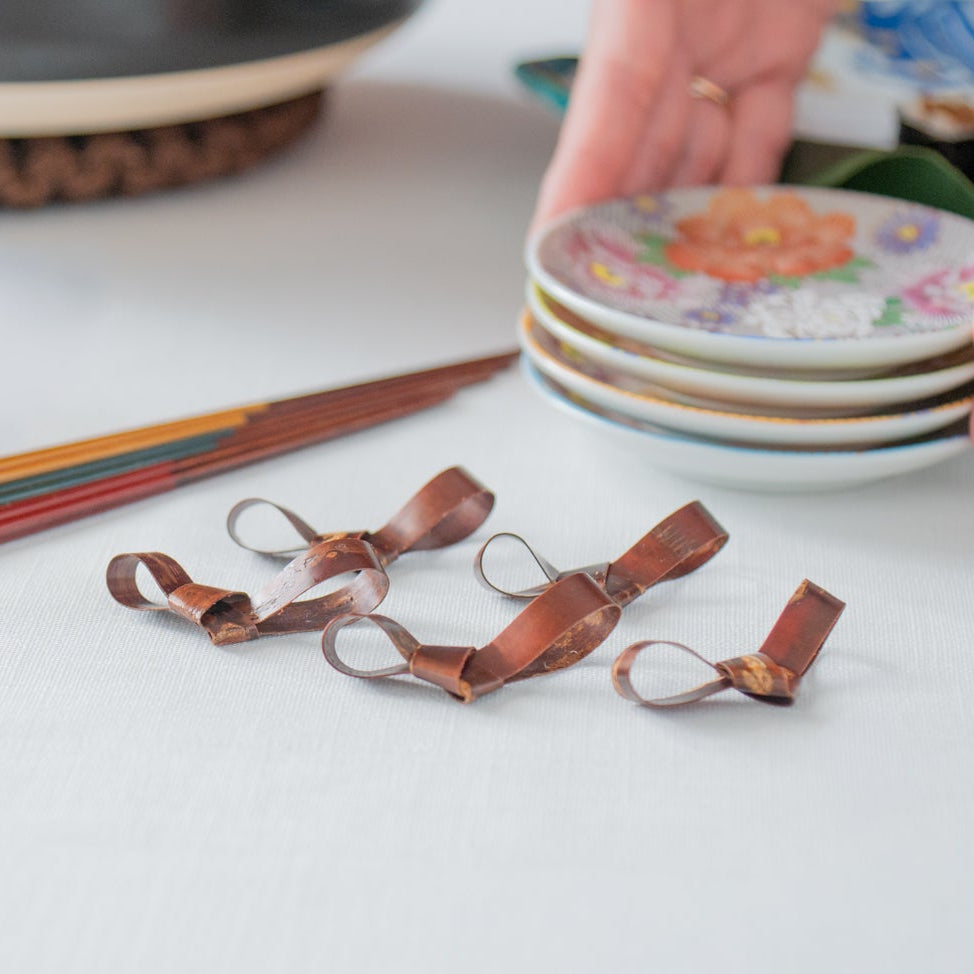

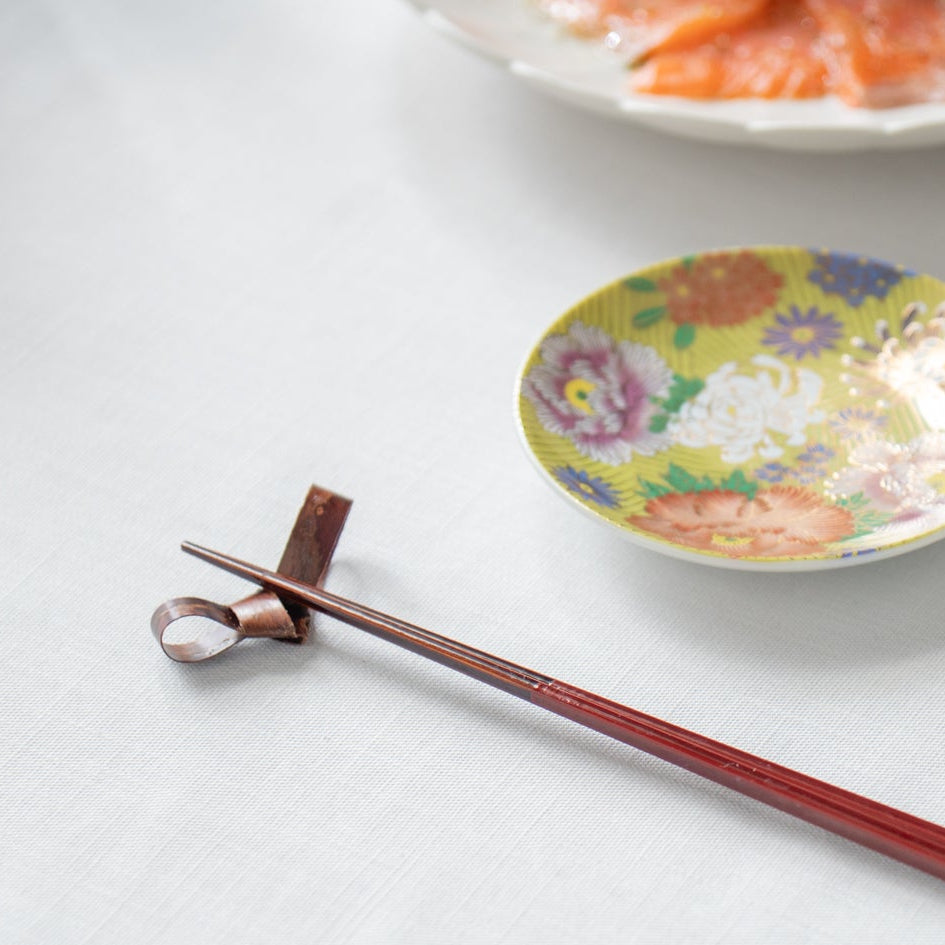
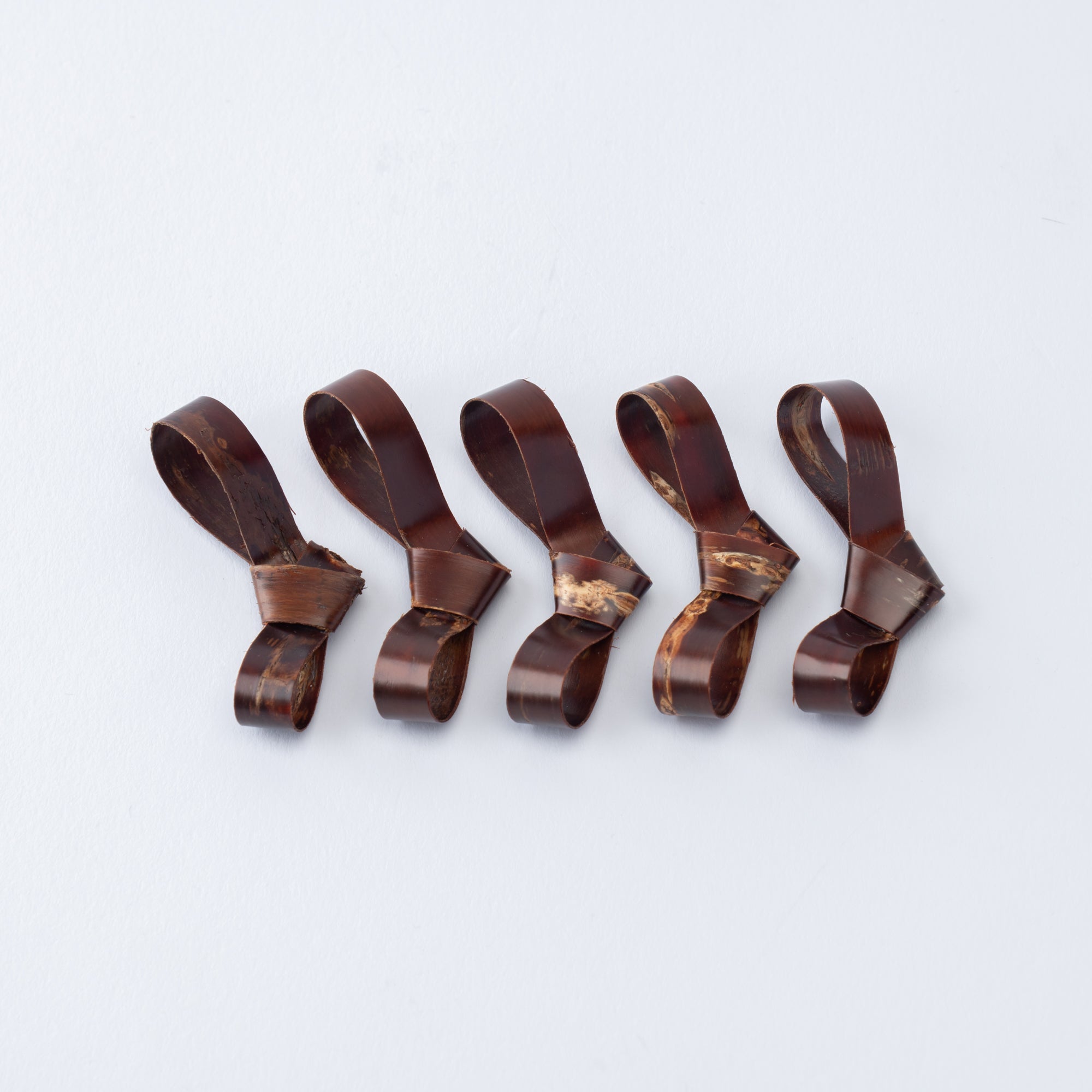


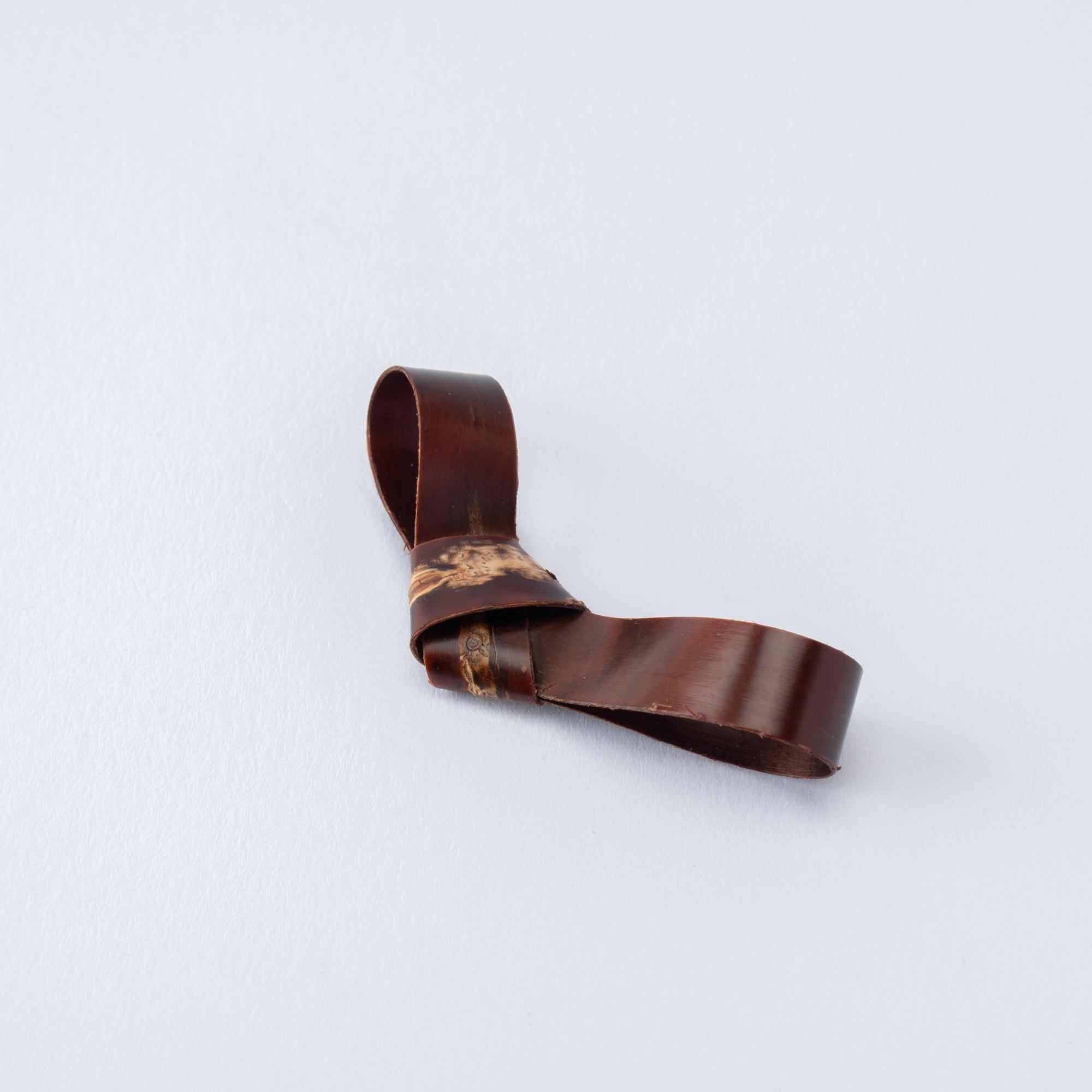
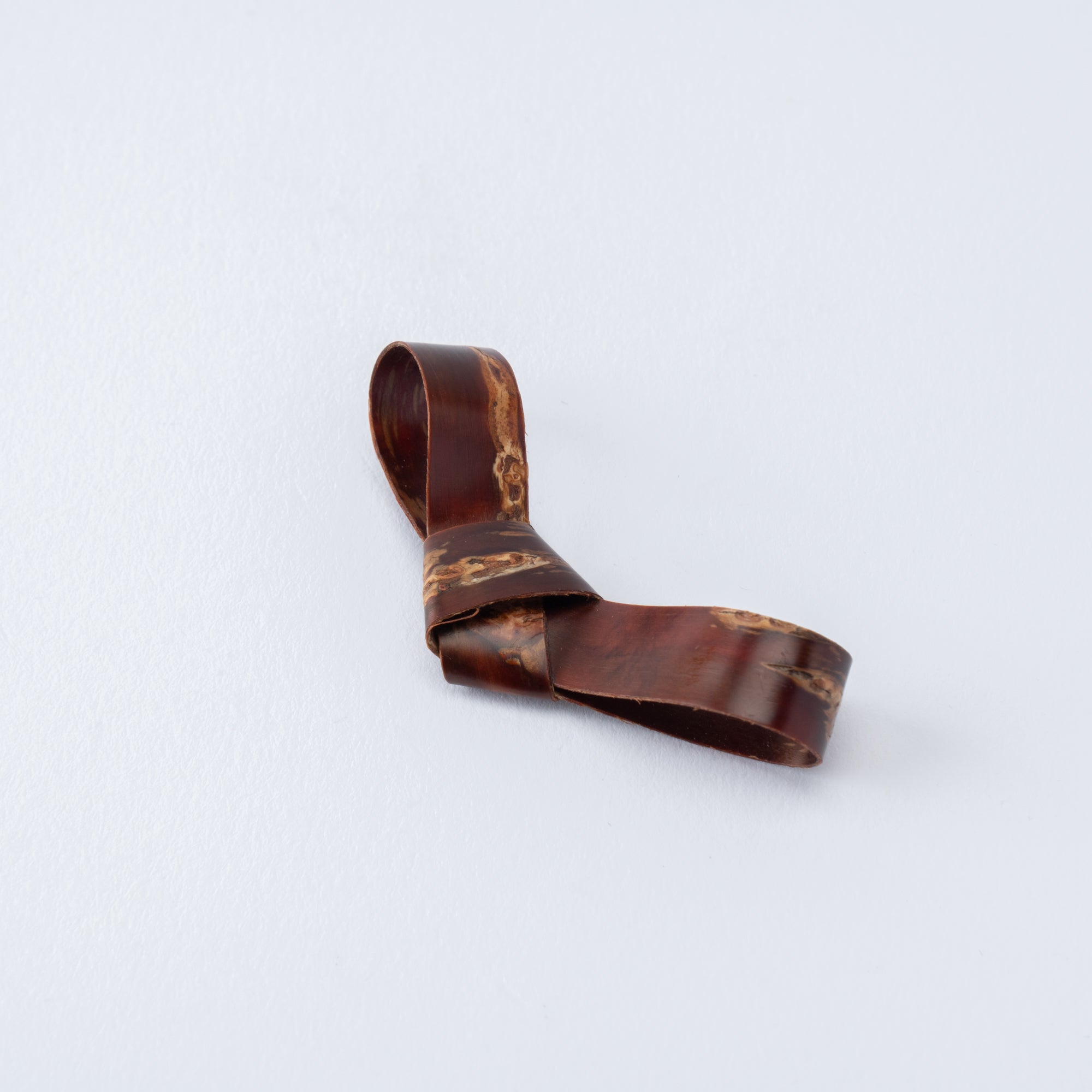
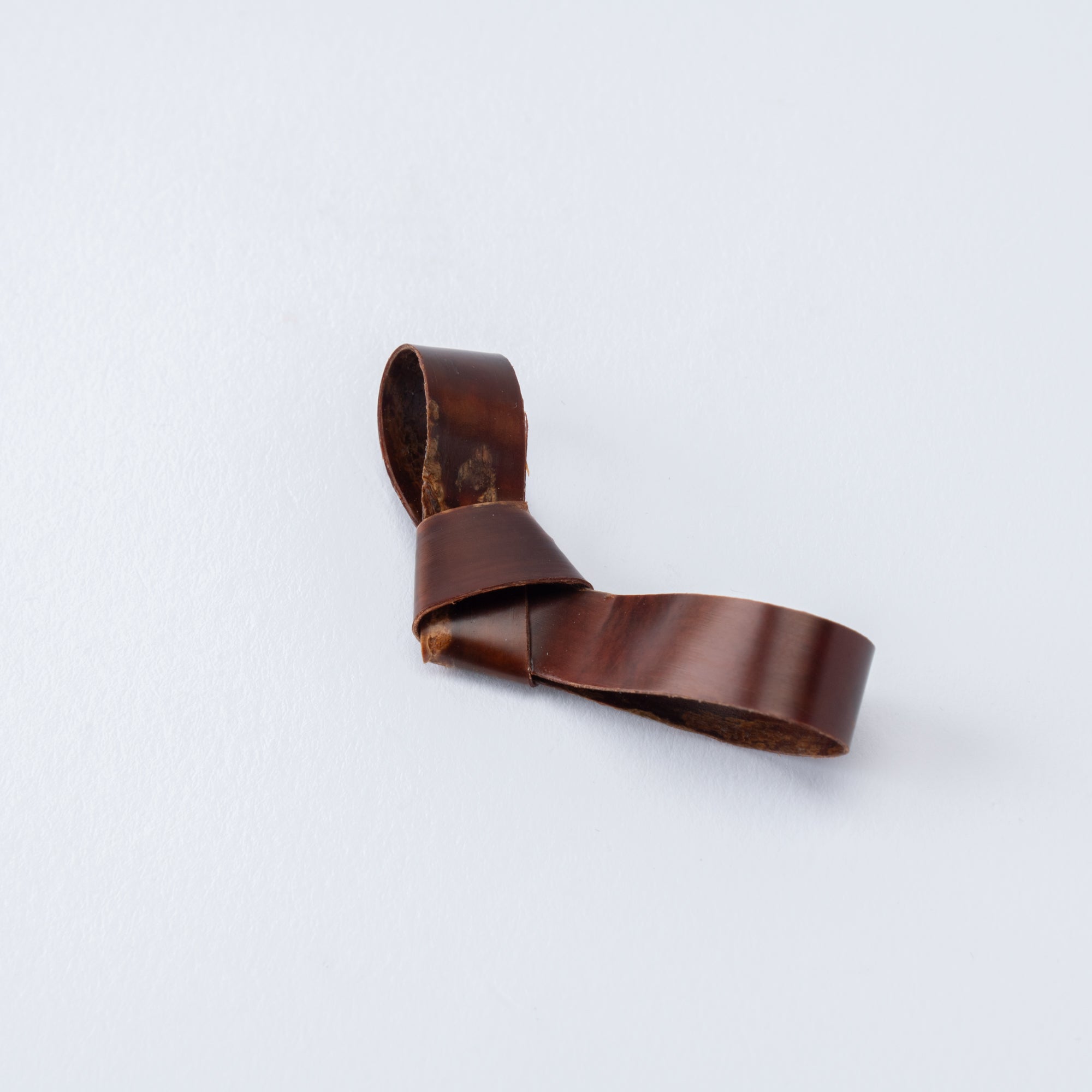
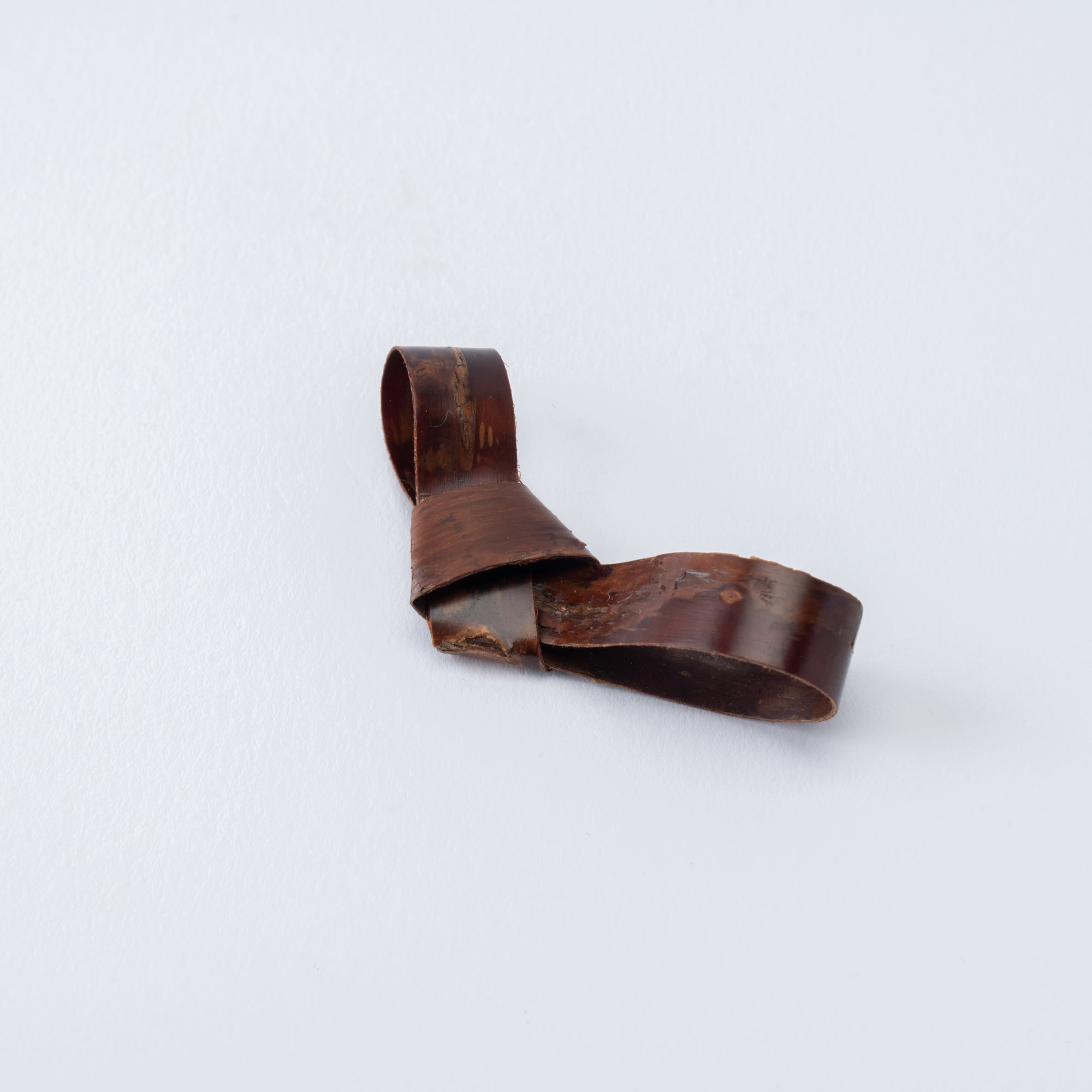
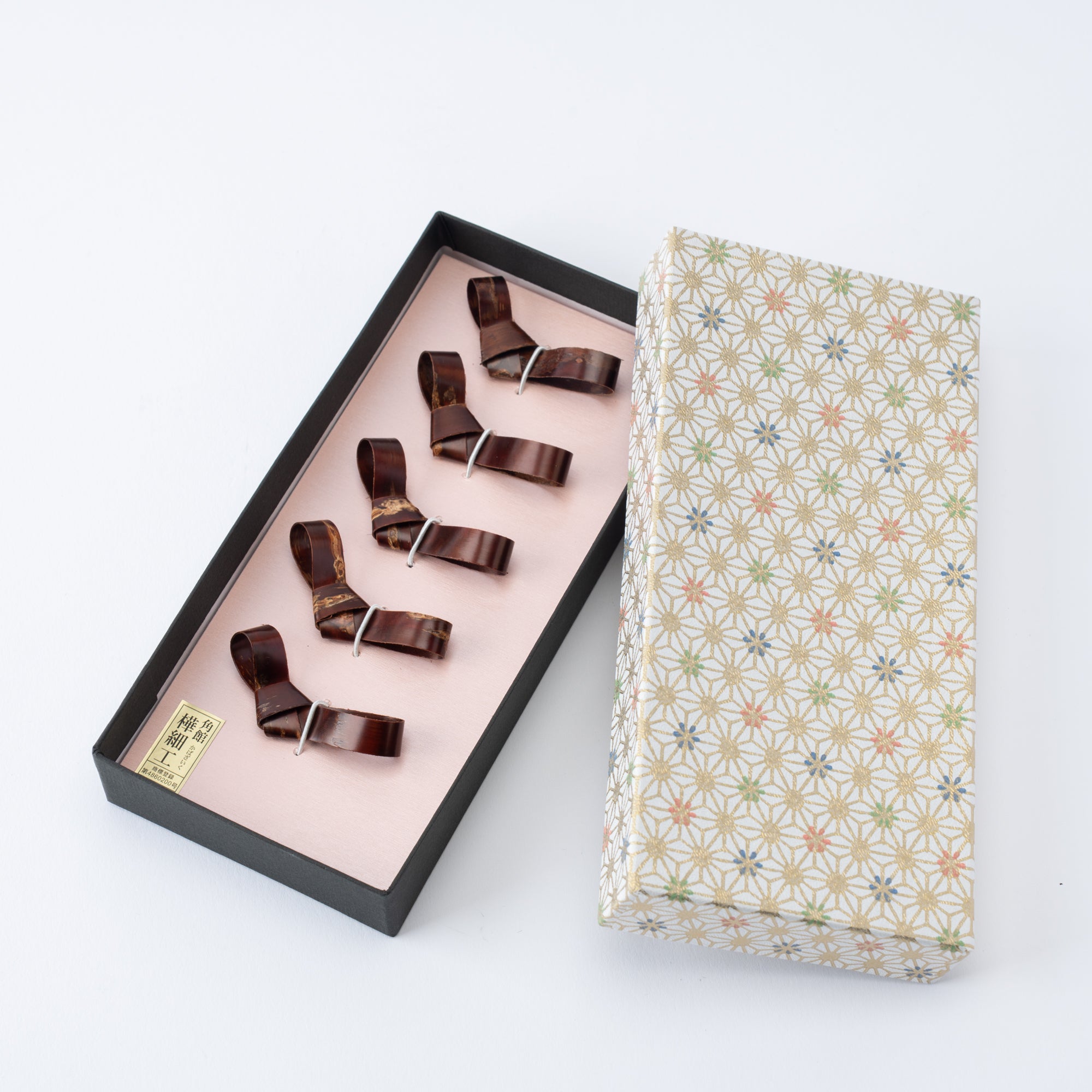
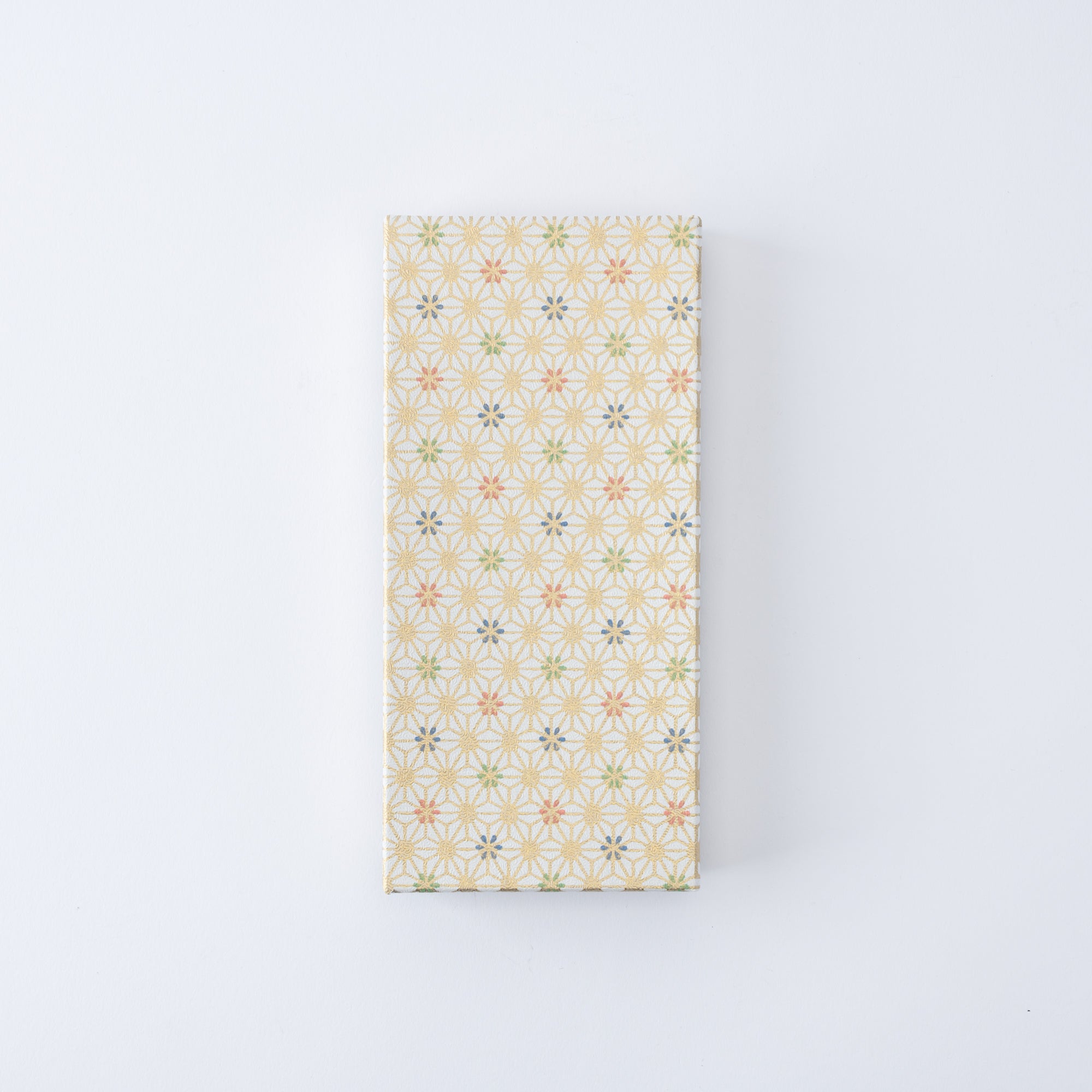
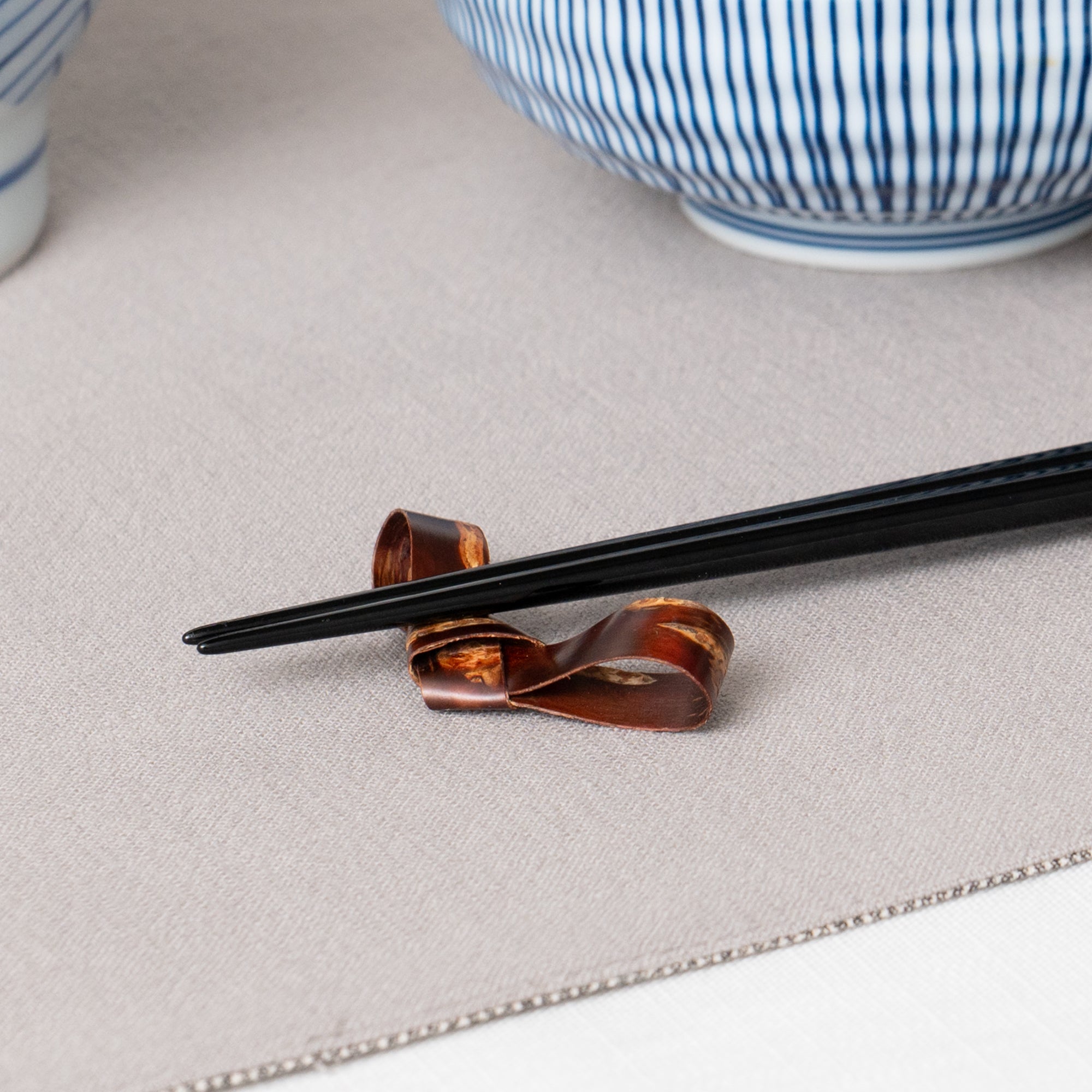

Essstäbchenablage-Set mit Schleifendesign
Estimated Shipping Widget will be displayed here!
Diese bandförmigen Essstäbchenhalter (5 Stück) sind aus Wildkirschrinde gefertigt und mit einem einzigen Stück Kirschrinde verknotet. Die Intarsienarbeit verleiht ihnen eine elegante Atmosphäre.
Empfohlen für alle, die Kunsthandwerk auf zwanglose Weise in ihre tägliche Küche integrieren möchten. Dieses beliebte Produkt wird auch in vielen Restaurants verwendet.
Die für die Arbeit mit Akita-Kirschrinde verwendeten Kirschbäume sind hauptsächlich Wildkirschbäume aus der Region Tohoku, die in einem rauen Klima wachsen und als schön und langlebig gelten.
Die Kirschrinde wird vorsichtig vom Stamm abgezogen und ein bis zwei Jahre im Schatten getrocknet, um die Feuchtigkeit zu entfernen. Yatsuyanagi engagiert sich für den Erhalt einer nachhaltigen Natur und für das Zusammenleben und den gemeinsamen Wohlstand von Natur und traditionellem Handwerk. Sie engagieren sich auch aktiv für die Anpflanzung wilder Kirschbäume auf Brachland.
EINZELHEITEN
| Quantity | 5 |
| Size | L 5.5 cm (2.2 in) x W 3 cm (1.2 in) x H 0.5 cm (0.2 in) |
| Material | Wood |
| Package Type | Paper box |
| Microwave | No |
| Dishwasher | No |
Hersteller / Marke
Yatsuyanagi wurde 1876 gegründet und bewahrt weiterhin die seltene Kunst des traditionellen Kirschrindenhandwerks, bekannt als kabazaiku. Die in der malerischen japanischen Region Kakunodate in der Stadt Senboku in der Präfektur Akita ansässigen Meisterhandwerker verbinden jahrhundertealte Techniken mit modernem Design und fertigen jedes Stück sorgfältig von Hand, um Produkte zu schaffen, die sowohl funktional als auch schön sind.
Erleben Sie mit dieser Kollektion feiner Kunsthandwerke aus Kirschrinde die perfekte Harmonie japanischer Tradition und zeitgenössischer Eleganz in Ihrem Alltag.
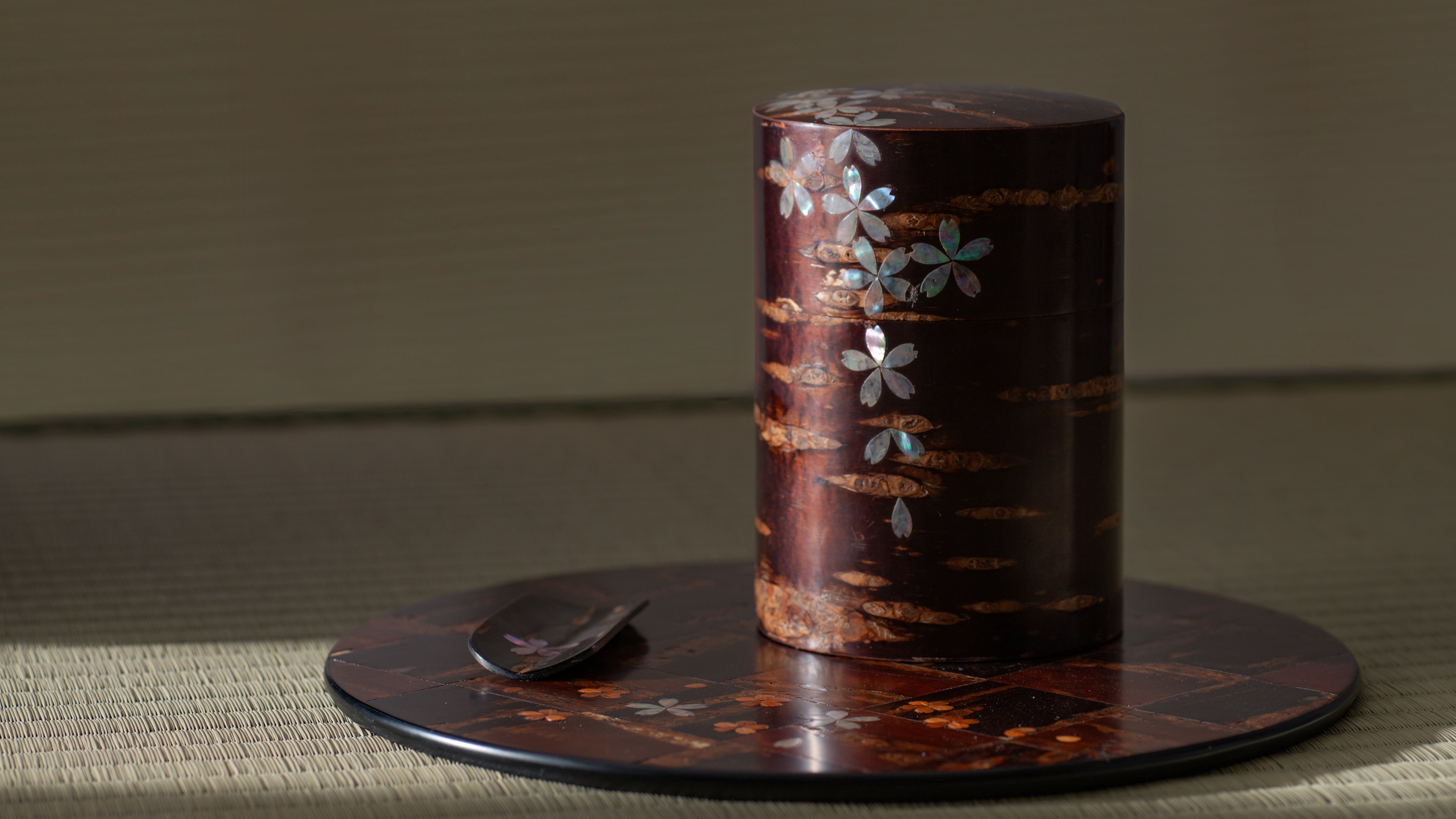
Kunsthandwerk
Kabazaiku ist ein Kunsthandwerk, das in der Präfektur Akita im Norden Japans aus der Rinde von Yamazakura, oder „Japanische Bergkirsche“. Der faszinierende seiden- oder metallartige Glanz, der der Kirschbaumrinde eigen ist, kombiniert mit ihrer tiefen Farbe, wird zur Herstellung von Stücken von unvergleichlicher Schönheit verwendet. Dieses traditionelle japanische Handwerk hat eine etwa 250-jährige Geschichte.
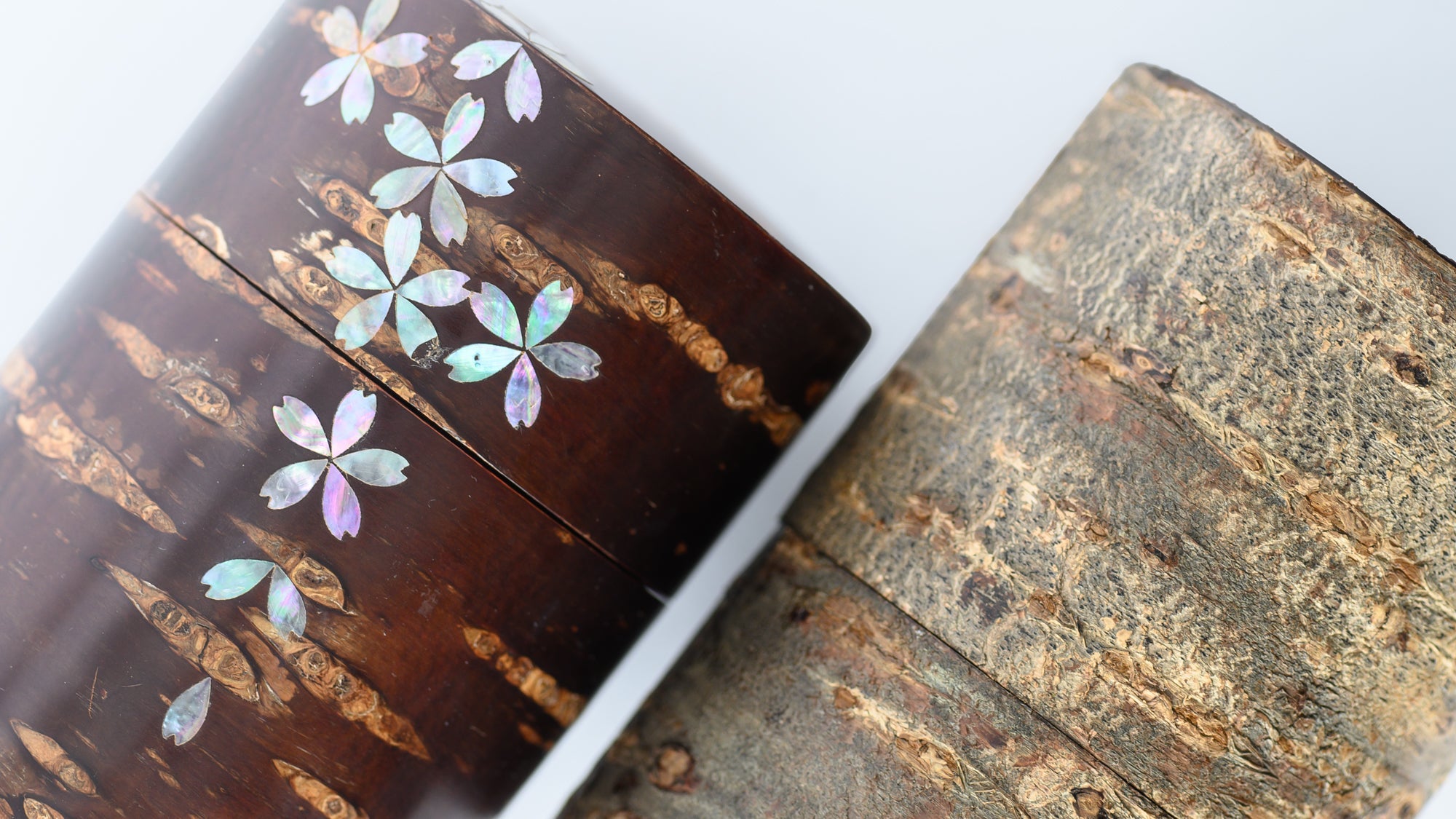
Optionen auswählen















Estimated Shipping Widget will be displayed here!
Essstäbchenablagen
Essstäbchenhalter verleihen Ihrem Tisch einen Hauch japanischen Stils. Eine Mischung aus Alltagsgegenständen und besonderen Anlässen macht Ihren Tisch für jeden Anlass bereit. Wir haben handgefertigte Essstäbchenhalter aus ganz Japan ausgewählt, um Ihr kulinarisches Erlebnis noch angenehmer zu gestalten. Von verspielten Porzellanformen bis hin zu eleganten Metalldesigns verleihen diese kleinen Akzente jedem Ambiente einen besonderen Charme.
